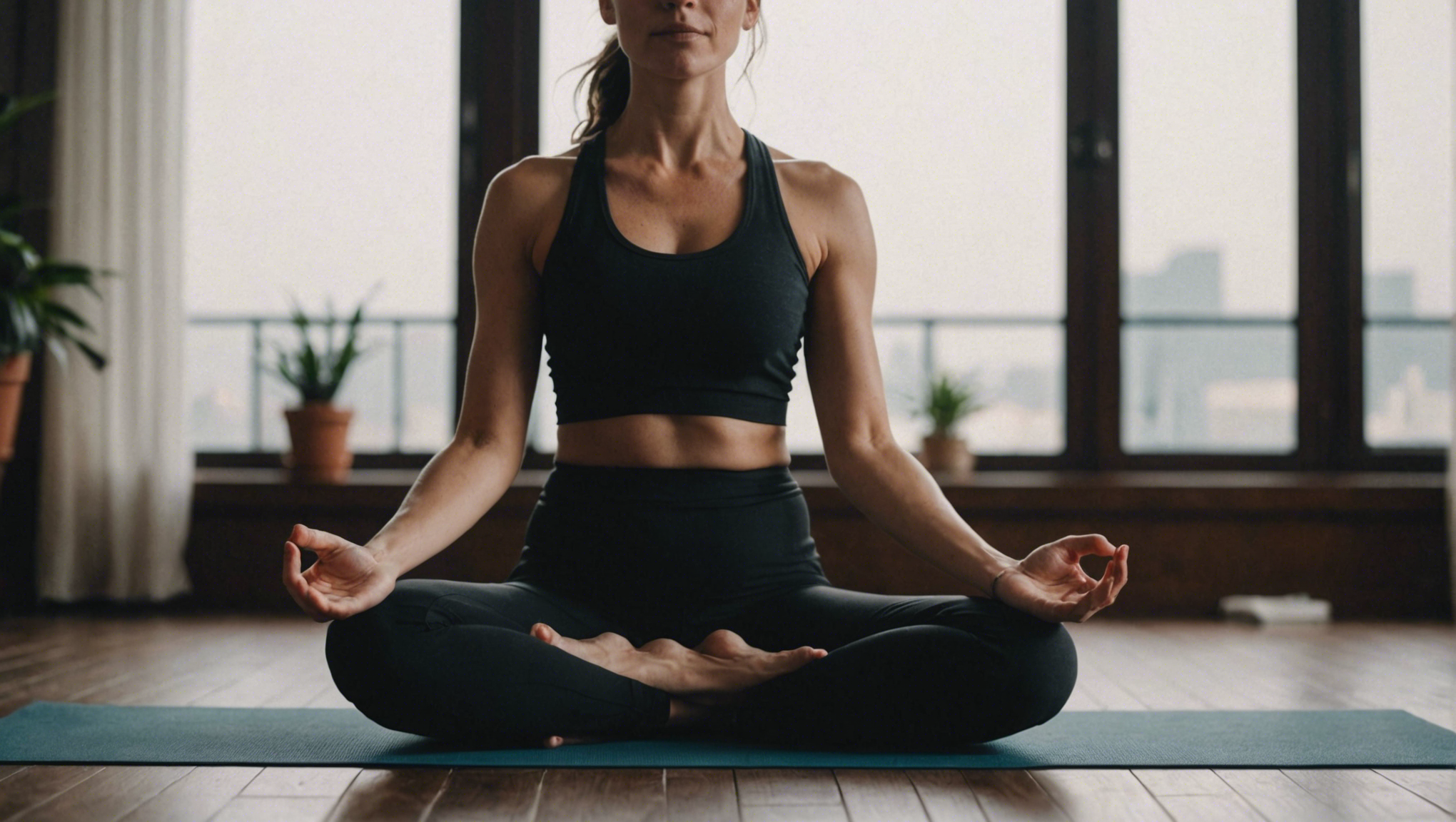Essential Guide: Yoga Poses To Avoid During The First Trimester
Essential Yoga Poses to Avoid During the First Trimester
Pregnancy is a time of immense change, both physically and emotionally. For many expectant mothers, yoga becomes a cherished practice that offers a moment of connection with their changing bodies and growing babies. However, the first trimester comes with its specific cautions and considerations, particularly when it comes to certain yoga poses. Understanding which poses to avoid during this delicate phase is crucial for the health and safety of both mother and child.
Navigating the Physical Shifts of Early Pregnancy
Early pregnancy can be a tumultuous period for many women, characterized by fatigue, morning sickness, and heightened sensitivity to physical strains. During these initial weeks, the body embarks on the incredible journey of nurturing a new life, necessitating a shift in how one approaches physical activity, including yoga. Recognizing the essential need for safety, this guide sheds light on yoga practices that are best set aside during the first trimester.
Poses That Increase Fall Risk
One of the primary considerations during the early stages of pregnancy is the reduction of fall risk. As the body begins to accommodate the growing fetus, the center of gravity shifts, increasing the risk of imbalance and falls. Poses that require a high degree of balance or those performed on one leg should be approached with caution or avoided altogether.
- Avoiding Advanced Balancing Poses: Advanced poses such as Half Moon Pose or Standing Split demand a level of balance that might be challenging as your body adjusts to its new state. Opting for more stable poses can help maintain safety during practice.
Deep Twists and Backbends
Although yoga is renowned for its ability to enhance flexibility and strength, certain poses can exert undue pressure on the abdomen and back, areas of particular sensitivity during pregnancy.
-
Minimizing Deep Twists: Deep twists, like Revolved Triangle Pose, compress the abdomen and can be uncomfortable or unsafe in early pregnancy. Gentle twists that allow for space and do not compress the midsection are preferable.
-
Caution with Deep Backbends: Deep backbends such as Full Wheel Pose can place unnecessary strain on the lower back and abdomen. During the first trimester, it’s advisable to modify backbends or choose gentler back-stretching poses.
Intense Abdominal Workouts
The developing fetus resides within the abdominal region, making it paramount to avoid intense abdominal workouts that could potentially harm the baby or lead to discomfort for the mother.
- Modifying or Avoiding Core Intensive Poses: Traditional core exercises and poses that focus intensely on the abdominal muscles, like Boat Pose, should be modified or avoided. Supporting the abdomen and ensuring it does not undergo undue pressure is crucial during these initial weeks.
High-Heat Environments
Practicing yoga in a high-heat environment, such as Hot Yoga, increases the body’s core temperature, which might not be advisable during pregnancy, especially in the first trimester when the fetus’s development is most vulnerable.
- Opting for a Cooler Practice Environment: Ensuring a comfortable and cool environment for yoga practice helps in maintaining a safe body temperature, contributing to both the mother’s and baby’s well-being.
Prioritizing Safety and Comfort
Practicing yoga during pregnancy can offer numerous benefits, including stress reduction, improved flexibility, and a strengthened connection with the growing baby. However, the paramount priority remains the safety and comfort of the expectant mother and her baby. Consulting with a healthcare provider before continuing or beginning a yoga practice during pregnancy is always advisable. Additionally, seeking out classes specifically designed for pregnant women or working with instructors experienced in prenatal yoga can provide a safely adapted practice that respects the unique needs of the first trimester.
Pregnancy brings with it a profound transformation, and yoga can be a supportive and nurturing part of this journey. By adjusting one’s practice to accommodate the early stages of pregnancy, expectant mothers can continue to enjoy the benefits of yoga while ensuring the utmost safety for themselves and their babies.
The Impact of Yoga on Early Pregnancy: Balancing Benefits and Risks
Yoga—a practice that harmonizes the body, mind, and spirit—has been an integral part of wellness routines for centuries. Its adaptability and variety make it particularly appealing for individuals at different stages of life, including pregnancy. However, as beneficial as yoga can be, it’s crucial for expectant mothers, especially in their first trimester, to approach it with caution, balancing its benefits against potential risks.
Navigating Yoga During Early Pregnancy
The first trimester of pregnancy is a period of significant physical and emotional changes. Engaging in yoga can offer numerous benefits during this time, such as reduced nausea, enhanced mood, and improved sleep patterns. It is also believed to establish a deeper connection between the mother and the fetus, fostering a sense of wellbeing that is vital for both.
Nonetheless, this trimester carries an inherent fragility, making it essential to carefully select yoga poses that support rather than strain the pregnancy. The primary goal should be to maintain fitness and relieve stress, not to achieve peak physical performance or master complex poses.
Yoga Poses to Embrace with Caution
Certain yoga poses are ideally avoided during the first trimester due to the increased risk they pose. These include:
- Intense Backbends: While mild backbends can be beneficial by relieving back pain, deep or intense ones may exert undue pressure on the abdomen.
- Twists: Twisting poses can disrupt the flow of blood to the uterus and should be modified to ensure they are open rather than closed.
- Inversions: While they might be part of an experienced yogi’s routine, inversions can increase the risk of falls and should be avoided by beginners or those feeling less stable during pregnancy.
- Excessive Forward Bends: Deep forward bends can place unnecessary pressure on the uterus and should be approached with caution, if at all.
Understanding the Benefits amid Caution
Despite these precautions, yoga can still play a pivotal role in supporting a healthy first trimester. Practices focusing on gentle stretches, controlled breathing, and meditation can significantly alleviate first trimester symptoms like fatigue and anxiety. These practices foster an environment of tranquility and balance, crucial for both mother and baby during these initial weeks.
Guidelines for a Safe Yoga Practice
To ensure yoga remains beneficial and not a source of additional strain during early pregnancy, here are some guidelines:
- Seek Professional Guidance: Consulting with healthcare providers and seeking classes led by instructors experienced in prenatal yoga is wise.
- Listen to Your Body: This is not the time for pushing physical limits. If a pose feels uncomfortable, it’s best to avoid it.
- Stay Hydrated: Keeping hydrated is crucial, especially during physical activity, to support the increased blood volume during pregnancy.
- Focus on Stability: Choose poses that enhance balance and stability, reducing the risk of falls.
The Importance of Emotional and Physical Wellness
As yoga nurtures the body, it also serves as a profound tool for emotional preparation. The meditative aspects of yoga encourage mindfulness and present-moment awareness, cultivating a tranquil mind ready to adapt to the challenges and joys of pregnancy.
The adaptability of yoga makes it an invaluable companion during the transformative journey of pregnancy. By prioritizing safety and listening to one’s body and medical advice, expecting mothers can harness the benefits of yoga, making their first trimester—and beyond—a more comfortable and joyful experience. Reflecting on the delicate balance between engaging in physical activity and honoring the body’s changing needs during early pregnancy is key to nurturing well-being at this special time.
Safe Alternatives: Recommended Yoga Practices for First Trimester Pregnant Women
Navigating the first trimester of pregnancy brings a mix of excitement and caution, especially when it involves physical activity. Yoga, with its holistic approach, encourages flexibility, strength, and mental wellbeing. However, not all yoga poses are suitable during this delicate phase. Understanding and adopting yoga practices tailored for early pregnancy can significantly benefit expectant mothers, offering a safe pathway to maintaining fitness and tranquility.
The Significance of Tailored Yoga Practices in Early Pregnancy
Pregnancy heralds a transformative phase in a woman’s life, necessitating adaptations in her physical activity routine. During the first trimester, the body undergoes significant hormonal changes, impacting physical strength, balance, and overall comfort. Engaging in inappropriate yoga practices could pose risks, making it crucial to identify poses that support, rather than jeopardize, maternal and fetal health.
Yoga, when practiced with awareness and adaptations, can be a sanctuary for expectant mothers. It fosters deep relaxation, eases pregnancy-related discomforts, and builds a supportive community. However, the essence lies in choosing practices that align with the physiological nuances of early pregnancy.
Gentle Postures for Strength and Balance
Adopting gentle postures promotes muscular strength and balance without straining the abdomen or back. Poses such as Marjaryasana-Bitilasana (Cat-Cow Stretch) offer gentle spinal flexion and extension, enhancing back flexibility and easing tension. Additionally, Vrksasana (Tree Pose) can be modified to emphasize stability and focus, crucial during these formative weeks.
Emphasizing Breath and Meditation
The profound shifts in pregnancy can also trigger anxiety and stress. Concentrating on breathwork (Pranayama) and meditation fortifies mental resilience and fosters an emotional bond with the unborn. Practices like Nadi Shodhana (Alternate Nostril Breathing) harmonize the left and right hemispheres of the brain, eliciting calm. In tandem, guided meditation sessions can soothe the mind, preparing it for the journey ahead.
The Pivotal Role of Props and Modifications
Props—such as bolsters, blocks, and blankets—into yoga practices enriches the experience for pregnant women. These aids offer support, enabling deeper relaxation in poses without overexertion. Siddhasana (Accomplished Pose) with a bolster supports the hips, fostering comfort and concentration during meditation or pranayama sessions.
Yoga Practices to Sidestep in the First Trimester
Awareness is key in sidestepping practices that might be perilous during early pregnancy. Poses that involve intense backbends, deep twists, or abdominal pressure should be avoided. Similarly, hot yoga or any practice that excessively elevates the body temperature is not recommended, given the potential risks to fetal development.
Crafting a Safe and Nurturing Yoga Routine
Designing a yoga routine during the first trimester involves balancing the need for physical activity with the imperative of caution. Beginning with a consultation with a healthcare provider is prudent, followed by seeking guidance from a prenatal yoga instructor. Tailoring the yoga experience to suit individual health conditions, pregnancy symptoms, and comfort levels ensures a beneficial practice.
The Community Aspect of Prenatal Yoga
Engaging in prenatal yoga classes builds a supportive community among expectant mothers. Sharing experiences, challenges, and joys fosters a sense of belonging and emotional support. As prenatal yoga classes often integrate discussions on pregnancy, childbirth, and parenting, they offer a wellspring of information and camaraderie.
Embarking on a yoga journey during the first trimester of pregnancy holds the promise of enhanced physical health, emotional wellbeing, and social support. By embracing safe and modified yoga practices, expectant mothers can navigate this transformative phase with grace and vigor. The key lies in listening to one’s body, seeking professional guidance, and nurturing the bond with the life growing within. In doing so, yoga becomes not just a practice of physical postures, but a holistic embrace of pregnancy’s profound journey.
Understanding the Physiological Changes in the First Trimester and Yoga’s Role
Unpacking the Physiological Changes in Early Pregnancy
The journey into motherhood introduces a myriad of physiological changes within the first trimester, setting the foundation for the months ahead. During this critical time, an expecting mother’s body undergoes significant transformations to accommodate the growing fetus. These changes include hormonal fluctuations, increased blood volume, and the beginning stages of organ development for the baby. Understanding these alterations is essential, not just for anticipating physical and emotional shifts but also for tailoring lifestyle modifications such as exercise routines, with yoga being a prime example.
Yoga’s Multifaceted Role During Pregnancy
Yoga, with its holistic approach to well-being, plays a significant role during the first trimester by offering physical benefits, emotional balance, and mental tranquility. However, due to the delicate nature of early pregnancy, certain yoga poses should be approached with caution or avoided altogether to prevent undue stress on the body. The emphasis lies not only on enhancing maternal health but also on ensuring the utmost safety for both mother and unborn child.
Identifying Yoga Poses to Steer Clear of in the First Trimester
Recognizing the poses that may not be conducive to the first trimester can guide expectant mothers in maintaining a safe yoga practice. Poses that involve deep twists, intense backbends, and those that exert pressure on the abdomen are generally advised against. Additionally, inversions and advanced asanas that challenge balance or place the body in a vulnerable position should be deferred until after pregnancy or approached with extreme care under professional guidance.
Emphasizing Yoga Alternatives for Early Pregnancy
Focusing on gentle, restorative yoga practices can be beneficial during this transformative phase. Poses such as the Cat-Cow stretch, side lying positions, and certain seated stretches can support the body’s adaptability to pregnancy-induced changes. These alternative asanas promote flexibility, circulation, and stress relief, all while safeguarding maternal and fetal well-being. mindful breathing techniques alongside these poses further enhances the calming effects of the practice.
The Quintessence of Professional Guidance and Personal Intuition
Navigating through these pivotal first months with the support of a yoga instructor experienced in prenatal yoga can provide an invaluable layer of safety. Such expertise ensures that modifications and recommendations are tailored to individual needs, honoring the body’s limits and the pregnancy’s progression. Equally important is tuning into personal intuition; listening to the body’s signals and understanding its boundaries, thus fostering an environment of nurturing and respect for the pregnancy journey.
The Synergy of Yoga and Pregnancy: A Path to Wholeness
Yoga’s role during the first trimester extends beyond physical poses; it is a compass guiding expectant mothers through the ebb and flow of pregnancy’s early stages. By melding awareness with adaptation, yoga can be a source of strength, resilience, and serenity, making the first trimester not just a period of caution but also one of profound connection and growth.
Navigating the first trimester with yoga requires a balance of knowledge, caution, and adaptability. The physiological changes during this time are both astounding and demanding, necessitating a harmonized approach to exercise and well-being. Yoga, when practiced with awareness and respect for these changes, offers a holistic path to embracing pregnancy’s challenges and joys. It underscores the importance of informed choice, highlighting the value of selecting poses that enrich rather than endanger the prenatal experience. Through this lens, yoga transcends being merely an exercise regimen; it becomes a journey of health, harmony, and heartfelt connection with the unfolding miracle of new life.
Expert Insights: Yoga Instructors and Obstetricians Advise on First Trimester Fitness
Navigating the world of fitness during the first trimester of pregnancy can be both exciting and daunting. With varying opinions and an abundance of cautionary tales, it’s essential to strike a balance between staying active and ensuring safety. Expert insights from seasoned yoga instructors alongside obstetricians provide a nuanced framework for prenatal fitness, particularly focusing on yoga—a practice known for its flexibility, strength, and mental well-being benefits.
Yoga Practices to Approach with Care
When embarking on a yoga journey during the first trimester, understanding the body’s new limits and capabilities becomes paramount. The surge of hormones, increased blood volume, and the body’s efforts to create a nurturing environment for development can significantly impact physical activities. Certain poses, particularly those that involve intense abdominal work, deep twists, and inversions, may not be suitable during these initial weeks.
Core-Strengthening Poses
Although core strength is vital for a healthy pregnancy, overly aggressive abdominal exercises can lead to unnecessary strain. Poses like Paripurna Navasana (Boat Pose) or intense variations that focus heavily on the core should be approached with caution or altered under the guidance of an experienced instructor.
Deep Twists
Deep twists compress the abdomen and can be uncomfortable and potentially unsafe as the uterus grows. Gentle, open twists that allow space for the belly are preferable, offering the benefits of the twist without the risk.
Inversions
While inversions may have been a staple in a pre-pregnancy yoga routine, the first trimester is a time to evaluate their necessity. The risk of falling and the potential for blood pressure fluctuations make it prudent to avoid poses like Adho Mukha Vrksasana (Handstand) or Sirsasana (Headstand).
Emphasizing Gentle, Nurturing Practices
Focusing on gentle yogic practices can facilitate emotional and physical well-being during the first trimester. Utilizing props and embracing modifications can ensure a nurturing and safe yoga experience.
Focus on Breathing and Gentle Flow
Simple, flowing sequences that emphasize breath work can support the body’s changes and promote mental calm. Practices such as Pranayama (breathing exercises) are invaluable for maintaining equilibrium and reducing stress.
Mindful Modifications
Props like blocks, bolsters, and blankets can offer support, enabling modifications that accommodate the pregnant body’s needs. Poses like Balasana (Child’s Pose) can be adapted with a bolster to provide comfort and support.
The Importance of Expert Guidance
Seeking guidance from yoga instructors who specialize in prenatal yoga, or who have comprehensive training in adapting practices for pregnancy, is essential. Collaboration between healthcare providers and yoga professionals ensures a holistic approach to prenatal fitness, aligning physical activities with medical insights.
Personalization of Practice
Every body and every pregnancy is unique. Tailoring the yoga practice to individual needs and experiences, with a professional’s input, maximizes the benefits while minimizing risks. Open communication with healthcare providers about fitness routines ensures that yoga practice complements prenatal care.
Holistic Well-being: Beyond Physical Fitness
Yoga during the first trimester isn’t solely about physical activity; it’s also an opportunity to cultivate a nurturing mental and emotional space. The meditative aspects of yoga, focusing on the connection between mind, body, and breath, support holistic well-being, preparing expectant mothers for the journey ahead.
Navigating Fitness with Confidence
The collaboration between yoga instructors and obstetricians in guiding prenatal fitness underscores the importance of a balanced, informed approach. As expectant mothers navigate the changes of the first trimester, yoga offers a path to maintain fitness and embrace well-being, armed with expert insights and personalized adaptations. With attention to safety, mindfulness, and the joy of movement, yoga can be a cherished component of the pregnancy journey, fostering strength, calm, and a deep connection with the developing life within.
Conclusion
Embarking on a journey through pregnancy, especially during the critical phase of the first trimester, demands a blend of caution and wellness where yoga often enters as a preferred choice for many. While the practice is celebrated for its ability to harmonize the mind, body, and spirit, it’s crucial that expectant mothers navigate this path with an informed awareness of which yoga poses are beneficial and which pose potential risks during these initial months of pregnancy. This article has delved deep into the essence of yoga’s impact in early pregnancy, highlighting essential poses to sidestep, understanding physiological shifts, and pointing toward safe alternatives, all backed by expert insights from yoga instructors and obstetricians.
The juxtaposition of yoga’s benefits against its risks during the first trimester sets a complex stage. On one hand, yoga offers tremendous potential for stress relief, relaxation, and physical strength. On the other, certain positions may inadvertently strain the body during a time of significant hormonal changes and embryonic development. The discourse around essential yoga poses to avoid underscores the necessity of avoiding positions that put pressure on the abdomen, deep twists, and those that challenge balance excessively, thus preventing unwanted stress on both the mother and the developing fetus.
Navigating this delicate balance, our exploration sheds light on the profound physiological transformations that a woman’s body undergoes during the first trimester. These changes advocate for a modified yoga practice that respects the body’s new limits and promotes its well-being. It is within this context that yoga can play a pivotal role, not just in maintaining fitness, but in nurturing a deep connection between the mother and the fetus. However, acknowledging these shifts paves the way for adopting practices that are not only physically accommodating but also emotionally supportive.
Turning to the beacon of safe alternatives, we unveiled yoga practices tailored for the nuanced needs of first trimester pregnant women. Highlighting gentle poses, focused breathing techniques, and meditative practices ensures that yoga remains a refuge for mind and body without crossing the delicate thresholds posed by pregnancy’s early stages. This prudent path ensures that expectant mothers can still relish the benefits of yoga, such as reduced stress and enhanced physical resilience, without compromising safety.
Amplifying this guidance, we drew upon a wealth of expertise from distinguished yoga instructors and obstetricians. Their insights form a critical bridge between ancient yoga traditions and contemporary medical advice, creating a holistic approach to first trimester fitness. By heeding their counsel, expectant mothers are equipped with the knowledge to discern which practices serve their best interests and are provided a compass for navigating their yoga journey through pregnancy with confidence and ease.
Embarking on or continuing a yoga practice during the first trimester of pregnancy, therefore, becomes a journey of gentle exploration and mindful adaptation. By respecting the body’s changing needs and prioritizing the health of both mother and unborn child, yoga can indeed be a supportive ally. It encompasses not just the avoidance of certain poses, but a broader understanding and application of yoga’s holistic benefits—mindful of the risks yet fully embracing the safe, nurturing alternatives.
Ultimately, this comprehensive examination underscores a harmonious synergy between yoga and pregnancy—a synergy that flourishes with informed choices, expert guidance, and an attuned listening to the body’s wisdom. By navigating the intricate balance between engaging in physical activity and honoring the body’s limitations during these first precious months, expectant mothers can foster an environment of wellness, serenity, and profound bonding with their baby, laying a resilient foundation for the journey ahead in pregnancy and beyond.




